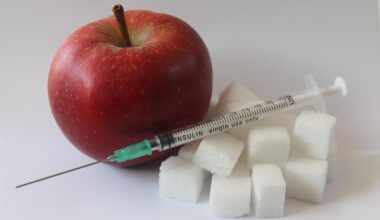Tailoring Your Dog’s Diet: Breed-Specific Nutritional Guidelines
Understanding a dog’s specific nutritional needs based on its breed is vital for maintaining optimal health. Each breed carries unique characteristics, which influence their dietary requirements. For example, larger breeds like Great Danes require diets that support joint health due to their weight. Conversely, smaller breeds like Chihuahuas may need calorie-dense foods because of their higher metabolism. It’s essential to consider the life stage as well; puppies have different nutritional needs compared to adults or seniors. Additionally, some breeds are predisposed to genetic health issues, which may necessitate specialized diets. For instance, Dachshunds are often at risk for spinal problems, so a targeted diet can help maintain healthy weight and minimize these risks. Consulting with a veterinarian is crucial to establish the proper diet that promotes health and longevity for your beloved pet. Look for breed-specific foods in pet stores, as these often contain tailored nutrient profiles. Proper nutrition sets the foundation for your dog’s well-being, longevity, and overall happiness. Always monitor your dog’s weight and adjust feeding accordingly to maintain ideal body condition.
Understanding how and when to feed your dog can significantly impact its quality of life as well. Different breeds have different energy levels and requirements. High-energy breeds like Border Collies often require more frequent meals and higher protein content to sustain their activity levels. On the other hand, less active breeds like Bulldogs may only need one or two meals a day, as excessive food can contribute to obesity. Age also plays a critical role; puppies need more frequent feedings due to their rapid growth, while older dogs may benefit from increased fiber in their diet to aid digestion. Regular vet check-ups can help gauge acceptable weight and nutritional needs accordingly. The type of food is also crucial; high-quality kibble versus a raw diet will vary in benefits. When choosing commercial options, always read through ingredient lists and avoid fillers that provide little nutrition. Moreover, consider consulting dog nutritionists for insights tailored specifically to your dog’s breed. Careful feeding strategies promote a healthier lifestyle and may reduce veterinary costs. Transitioning between diets should be gradual to avoid digestive upset and maintain well-being.
Macronutrient Balance for Different Breeds
A balanced diet consists of macronutrients such as proteins, fats, and carbohydrates. For instance, working dog breeds like Huskies require higher protein content in their diets to fuel their endurance and physical output. In contrast, companion breeds that spend most of their time lounging, such as Shih Tzus, generally need lower protein and fat levels to avoid weight gain. Fats are also vital; they provide energy and help absorb fat-soluble vitamins. Maintaining a healthy fatty acid balance addresses skin and coat health, a significant concern in breeds prone to allergies like Retrievers. The carbohydrate to protein ratio is important too, especially for large breeds which may benefit from slower-digesting carbs to maintain steady energy levels throughout the day. When selecting dog food, ensure that it has sufficient macronutrient balance that caters specifically to their breed requirements. Reading labels may seem tedious, but understanding these basics ensures that you’re providing the right diet for your furry friend. Always consult with your vet periodically to reassess dietary needs as your dog ages or changes activity levels.
Moreover, hydration is often overlooked in dog nutrition but is equally crucial, irrespective of breed. Dogs require constant access to fresh water, as hydration affects digestion, energy levels, and temperature regulation. Some breeds, especially those with thicker coats like Newfoundlands, might need more hydration due to their physical attributes. While wet food provides some moisture, most dogs should have free access to clean drinking water. Typically, dogs drink in response to activity levels, but it’s still vital to monitor their intake, as dehydration can lead to serious health complications. Consider using water bowls that can keep water cool or experimenting with water fountains that may encourage drinking. Additionally, dog treats may also tie into hydration; many fruits like watermelon can serve dual purposes, offering hydration and serving as a low-calorie snack. If you have any concerns about your dog’s drinking habits, speaking to your veterinarian will guide you further. Overall, ensuring your dog remains well-hydrated complements its nutritional needs, creating a well-rounded approach to care. Remember that good hydration enhances nutrient absorption and keeps them active.
Considerations for Allergies in Specific Breeds
Like humans, dogs can have food allergies, and certain breeds are more prone to these issues. Breeds such as the West Highland White Terrier and the German Shepherd often have sensitivities to specific ingredients like grains or certain proteins. Understanding these tendencies is crucial when choosing their diets. Switching to hypoallergenic dog food may improve their overall health and vitality if your dog has skin irritations or gastrointestinal issues. Always introduce new foods gradually and observe for any adverse reactions. Consulting with a veterinary nutritionist can provide a clearer understanding of the allergens affecting your dog. Many dogs thrive on novel protein diets that incorporate less common meat sources like duck or kangaroo, which are less likely to cause a reaction. Additionally, consider including probiotics to support gut health. Furthermore, keep in mind that grain-free diets can also have risks; ensure they’re balanced and provide sufficient nutrients. Regular vet visits will allow for monitoring allergies and adjustments to their diet as necessary. Making informed choices is vital for maintaining the long-term health of your dog, allowing for an active and happy life.
Implementing a new diet must be done carefully and attentively. Food transitions should generally occur over seven to ten days to minimize digestive issues. Start by mixing a small amount of the new food with the current diet and gradually increase the new food portion while decreasing the old one. Watch for any signs of an upset stomach, such as vomiting or diarrhea, and consult your vet if these occur. It’s also valuable to keep a feeding journal, noting changes in your dog’s behavior and health, as it can reveal if the new diet suits your dog’s needs. Consistency is crucial; sudden changes can lead to nutritional deficiencies or obesity if not done right. Remember each dog is unique; what works for one breed may not necessarily be effective for another. After transitioning, regularly evaluate your dog’s weight and energy levels to ensure the diet is appropriate. Select high-quality dog foods that suit your pet’s lifestyle and needs. Active breeds typically require more substantial nutrition than those who are less active. Tailoring the diet ensures overall health and brings joy to your canine’s life.
Conclusion: Lifelong Dietary Awareness
Ultimately, paying attention to breed-specific nutritional needs ensures that your dog leads a healthy, vibrant life. Nutrition for dogs is not a one-size-fits-all; it is essential to identify and cater to their individual requirements. Paying close attention to energy levels, age, weight, and any potential allergies can dramatically improve their well-being. It is advisable to revisit their diet regularly, adjusting according to their changing lifestyle and health over the years. Proper nutrition equips your furry friends to avoid common health problems and lead a fulfilling life. Pet owners should engage actively in learning more about their breed specificities. Additionally, participating in dog nutrition courses or workshops can give beneficial strategies and insights. Reaching out to professionals like vets or nutritionists will ensure that you are well-informed on the best practices. Make nutrition a priority, as a well-nourished dog is a happy dog. By investing time and effort into tailoring your dog’s diet, you’re securing their health and happiness for years to come, assuring you both many joyful moments together, fulfilling all their dietary needs thoughtfully.


